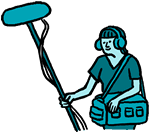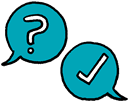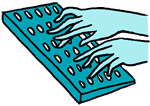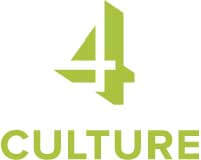Equipment for Organizations
Museum shelving, stage lights, ceramic kilns, microscopes, and computers—our Equipment for Organizations grant offers up to $15,000 to support these needs and more for arts, heritage, historic preservation, and science organizations in King County.
Steps to Apply
1
What Equipment for Organizations Funds
1
What Equipment for Organizations Funds

Equipment for Organizations grants fund the purchase and installation of equipment that can be considered as fixed assets, including computer hardware. You can request a minimum of $1,000 to a maximum of $15,000 for this grant. Applicants often receive partial funding of their request.
Organizations, governments, and public agencies that focus on the arts, heritage, historic preservation, or science and technology, and provide public benefit through their programs or activities, are eligible to apply. If your organization has not received a 2025 Sustained Support grant from 4Culture, we recommend contacting your discipline’s Program Manager by June 25 to check on your organization’s eligibility before starting your application.
If your organization is looking for funding for general operating funds, we encourage you to check out our Sustained Support or Launch grant programs. Projects that consist of general maintenance and repairs, the purchase of consumable items, or regular staff salaries are not eligible for this grant.
Criteria
We fund all of our grants through a competitive process, carefully evaluating each application.
For this grant, a panel will evaluate your application based on the following five criteria:
- Quality: your thought and reasoning behind your proposed equipment purchase, how carefully it has been planned, how it relates to your organization’s mission, and how central it is to the services your organization provides to King County residents and visitors.
- Feasibility: your ability to acquire and take care of the equipment, as demonstrated by a balanced project budget, access to a secure storage space, and the expertise of those who will select and maintain the equipment. Your project budget and plan are realistic and achievable, and the funding amount is appropriate for the project.
- Project Impact and Public Benefit: the impact this specific equipment will have on your organization’s operations or the programs you offer to the community. This may include, but is not limited to, increased programming abilities, additional audience capacity, or increased accessibility for people with disabilities. Frequency of use is a factor, including shared use by multiple groups, but only if it makes sense for all groups. What public benefits this equipment will help provide visitors and residents of King County. See the Public Benefit section for more information.
- Advancing Equity: 4Culture’s mission focuses on racial equity and envisions a county where culture is essential and accessible to all. Your organization’s focus is on marginalized communities, especially communities that are disproportionately impacted by structural racism (e.g. serving Black, Indigenous and People of Color (BIPOC) communities, engaging BIPOC leaders within a community, etc.). This is not a requirement to apply for Equipment for Organizations funding, but sharing about your organization’s equity work, however it manifests, will give the panel a fuller picture of how you support your community.
- Economic Impact: your project enhances your organization’s ability to make a meaningful contribution to the local economy by providing fixed assets to be utilized by staff, contractors, volunteers, and/or members of your community. Economic impact may also include purchases from local vendors and/or use of local contract labor for installation. Indirect impacts like increasing commercial activity, activating physical spaces, and enhancing the vibrancy of communities will also be considered.
Public Benefit: Why It Matters
4Culture is a public agency supporting the cultural sector through revenue from Lodging Tax, 1% for Art, and Doors Open funding sources. Core to our work and defined in our Charter is a requirement that everything we fund serves the public interest, enriching communities throughout King County.
We define Public Benefit as the opportunity for King County residents and visitors to access and engage in arts, science, and other cultural activities, events, communities of practice, historic and cultural spaces, and works of public art related to our program areas. It is also a service requirement for all recipients of funding from 4Culture. Public benefit makes it easier to experience culture.
As you work through your application, tell us exactly how your fellow King County residents and visitors will be able to enjoy and learn from your work. Here are some ways you can provide public benefit:
- Use of the equipment to create free or low-cost performances, exhibitions, workshops, screenings, or readings, or to take care of collections that reflect all of King County’s residents.
- Use of the equipment by groups serving marginalized communities including, but not limited to, Black, Indigenous, and People of Color in King County, people with disabilities, people with low-incomes, youth and senior groups, residents in rural or suburban King County, and/or other historically marginalized groups.
- Use of the equipment to broaden your ability to reach individuals with disabilities or to make your programs or facility more accessible to them.
- Use of the equipment that prioritizes public health benefits (i.e., air filtration units, or equipment related to remote online programming)
- Sharing the equipment with other cultural or science groups at no cost or low cost.
Geographic and Equity Investments
4Culture recognizes that where an organization is based or provides its services to, as well as the communities it serves, can affect access to funding and other resources. To take a step towards balancing these disparities, 4Culture will provide additional consideration to organizations that are based in parts of King County that are less served by other funding sources and to organizations that specifically serve marginalized communities, especially communities that are disproportionately impacted by structural racism.
Each of our grant programs utilizes a Geographic and Equity Investment system tailored to the specific needs of its applicants. This organization-wide practice —and what we learn about its impact—is an important step towards more equitable funding at 4Culture and throughout the King County cultural sector. If you meet any of the following criteria, you may be eligible for additional consideration during the panel process and/or additional support:
- Organizations that the adjudicating panel of peer reviewers agrees are excelling in advancing equity in King County.
- Organizations based outside of Seattle City limits.
- Organizations whose primary location is in a King County-designated Community of Opportunity. The Communities of Opportunity (COO) index includes a set of health and socioeconomic indicators to gauge community health and well-being and identify the areas of King County in greatest need of support.
Please note: Organizations with an annual budget over $5 million do not qualify for this additional Geographic and Equity Investment funding.
2
Are You Eligible?
2
Are You Eligible?

Your Organization
- Equipment for Organizations grants are available for federally recognized nonprofit arts, heritage, historic preservation, and science organizations incorporated in the state of Washington and based in King County; public corporations, Tribal governments, and public agencies; or arts, heritage, historic preservation, or science organizations that are fiscally sponsored by a 501c3 partner organization. Please note: check with your discipline’s Program Manager if you are using a fiscal sponsor to see if they are eligible for this grant.
- Your organization is based in and conducts a majority (51% or more) of your mission-based, public-facing activities in King County with a primary focus on arts, heritage, historic preservation, or science.
- Your organization has a board of directors, a proven two-year record of providing arts, heritage, historic preservation, or science experiences or services to the residents and visitors of King County and has no ongoing and continual deficits in your operating budget.
The following are not eligible:
- K-12 schools and school districts.
- Individual practitioners.
- Equipment purchased with this grant may not be used for religious worship or instruction.
Your Organization’s Discipline
4Culture funds Equipment for Organizations projects that are focused on Arts, Heritage, Historic Preservation, and Science and Technology. Below are the definitions for each discipline:
- Arts: includes organizations focused on creative place-making, cultural festivals, dance, design, film, folk and traditional arts, literary arts, multidisciplinary arts, music, theater, and visual arts.
- Heritage: includes organizations focused on the preservation and transmission of local history; ethnic history; Native cultures; folklore and intangible cultural heritage; and historic and archaeological resources.
- Historic Preservation: includes organizations focused on advocacy or assistance to preserve, promote, and sustain historic places; education about our historic built environment; or stewarding historic properties that serve as a venue for cultural activities.
- Science and Technology: includes organizations focused on natural and social sciences, characterized by a formalized framework that entails the reproducible testing and revision of falsifiable ideas based on observable facts, as well as formal and applied sciences, such as mathematics and engineering. Applicants that are zoos or aquariums must also be accredited by the Association of Zoos and Aquariums.
If you’re not sure if your organization fits the eligibility requirements or if you have a question about these criteria, please contact your discipline’s Program Manager.
Your Project
Equipment for Organizations funds may be used to pay for the following:
- Purchase of equipment that can be considered as fixed assets intended to be held for 10 years or more, such as machinery, equipment, or computer hardware.
- Installation fees if they are under 10% of your total request.
- Smaller items that are less than $200 per unit, if you demonstrate that the item is essential to the functionality of the larger equipment requested.
Note: equipment purchased using these funds must be stored in a secure location.
Equipment for Organizations funds may not be used to pay for the following:
- Facility design, engineering, purchase, or remodeling of a facility.
- General equipment maintenance or repairs.
- Installation fees that are over 10% of your total request.
- Purchase of materials and supplies that are less than $200 per unit and have expected useful life of less than 12 months.
- Purchase of warranties, subscriptions, or computer software.
- Items purchased before September 25, 2025.
- Fees directed to staff unless their work on the project is outside their regular job duties and payment is above and beyond their regular compensation structure.
- Applicants with open and unclaimed contracts for past 4Culture Cultural Equipment grants are not eligible. Please reach out to your discipline’s Program Managers with any questions.
Sample eligible equipment expenses could include, but are not limited to:
- ADA accessible equipment: closed caption devices, furniture, wheelchair lift
- Archival equipment
- Camera (not film)
- Chain motors
- Commercial sink
- Computer or iPads (not subscriptions)
- Computer equipment: hard drive, printer (not paper)
- Field equipment: environmental quality meters, refractometers
- Floor: outdoor stage, training mats, vinyl Marley floors
- Furniture
- Gallery/exhibit equipment: box truss, displays, frames, pedestals, shelves, vitrines
- Heating/Air equipment: air purifiers, dehumidifiers, infrared panels
- Instruments/concert production equipment
- Lab equipment: microscopes, centrifuge
- Laminating machine
- Lighting: lightboard, control console, lighting grid system
- Microphones: headset, wireless, tap shoe microphones (not batteries)
- Festival and pop-up event equipment
- Pottery: pottery wheels, ceramic or front-loading kilns, slab roller (not clay)
- Printing press
- Projectors
- Recording equipment: archiving, podcasting, streaming
- Refrigerator, if integral to programming
- Equipment for digital preservation
- Science materials: anatomy & physiology models, fossils, robotics kits, Van de Graaff generator
- Security camera
- Sound: portable sound system, amplifying speaker, audio workstations
- Vehicles, if integral to programming (not tires or insurance)
- Welding equipment
See a list of past Awardees here.
3
Helping You Succeed
3
Helping You Succeed

Personal Support
Workshops
Please join us to meet staff, learn how to apply, ask questions, and meet other applicants. Workshops make a big difference in the success of your application. We find that the strongest applications come from people who have attended a workshop.
Online workshops will be hosted on Zoom video conference with captioning available. You will need a Zoom account to join. Please register through the links below or click to join during the workshop time. Registration is not required for the in-person workshop.
Accessibility: ASL interpretation can be provided for any workshop by advance request. Please contact Jackie Mixon at for access requests and questions.
Office Hours
We will be standing by on Zoom to answer any questions, provide quick feedback on your application, and help you succeed. Join our open Zoom video call during one of the times provided, using the link below. Please note: there will be no formal presentation during office hours, but Program Managers will be on hand to answer any questions ahead of the July 9 application deadline.
Application Review
We are happy to offer feedback on a draft of your application! Please contact your discipline’s Program Manager before Wednesday, June 25 for this review request.
Resources
Videos
Watch these step-by-step videos for tips on how to set up an account, access the application, as well as a detailed walkthrough of the application:
Worksheet
This worksheet includes the full application with helpful tips. Use this to work offline, draft your responses, and then copy-and-paste them into the online application. Please use the application form in the grant portal to apply.
Download the worksheet: Word or PDF
Sample Applications
Read through a sample application that received funding. You can also view last cycle’s Arts, Heritage, and Preservation grant recipients on our Awardees page.
Sample applications:
Friends of Little Saigon
Studio East
The Rhapsody Project
Contact
We are here to help! Please contact us if you have a question about your organization’s eligibility or if you would like to have your application draft reviewed. Contact your discipline’s Program Manager before Wednesday, June 25 for these requests. After this date, Program Managers will be unable to pre-check your information before the grant closes, and we may not be able to determine whether your group or grant request is eligible until after an application has been submitted.
Arts
Melissa Newbill
206-263-1603
Heritage
Natasha Varner, Ph.D.
206-848-0008
Preservation
Emily P. Lawsin
206-477-3110
Science + Technology
Jennifer Pritchard
206-263-8305
Translation and Assistance
The guidelines, a detailed explanation of how to apply, and the application are in English. If this is a barrier that stops you from understanding the grant or applying due to limited English writing ability, visual impairment, or you would like to request assistance to create an application, please contact or call (206) 296-7580 or TTY 711, and we will make sure you get the support you need.
Русский (Russian)
Руководство, подробная инструкция и форма заявки на английском языке. Если вам сложно разобраться в процедуре получения грантов или подачи заявок из-за ограниченных навыков письменного английского языка либо нарушений зрения, а также если вы бы хотели обратиться за помощью при составлении заявки, отправьте письмо на адрес электронной почты или позвоните по номеру (206) 296-7580 или 711 (телетайп), и мы позаботимся о том, чтобы вы получили необходимую помощь.
Soomaali (Somali)
Tilmaamaha, sharaxaadda faahfaahsan ee ku saabsan sida loo codsado, iyo waraaqda codsiga waxa ay dhammaan ku qoran yihiin Af-Ingiriisi. Haddii ay arrintani tahay caqabad kaa hor istaageysa fahamka deeqda ama codsashada oo ay sabab u tahay awoodda qorista Af-Ingiriisiga oo xadidan, araggaaga oo liita, ama aad jeclaan lahayd inaad codsato in lagaa caawiyo in aad codsi sameyso, fadlan la xiriir ama wac (206) 296-7580 ama TTY 711, waxaana xaqiijin doonnaa inaad hesho taageerada aad u baahan tahay.
Español (Spanish)
Las pautas, la explicación detallada de cómo enviar la solicitud y la solicitud están en inglés. Si esto le impide comprender la información relacionada con la beca o enviar una solicitud debido a una limitación en la capacidad para escribir en inglés, si tiene una discapacidad visual o si desea recibir asistencia para crear una solicitud, escriba a o llame al (206) 296-7580 o TTY 711, y nos aseguraremos de que obtenga la ayuda que necesita.
Tiếng Việt (Vietnamese)
Hướng dẫn, giải thích chi tiết về cách nộp đơn va tài liệu áp dụng tất cả đều bằng Tiếng Anh. Nếu đây là rào cản khiến quý vị không hiểu được khoản trợ cấp hoặc cách nộp đơn do khả năng viết tiếng Anh hạn chế, do quý vị bị suy giảm thị lực hoặc muốn yêu cầu hỗ trợ để tạo đơn đăng ký, làm ơn liên hệ hoặc gọi (206) 296-7580 hay TTY 711 và chúng tôi sẽ hỗ trợ những gì quý vị cần.
4
After You Submit
4
After You Submit

Timeline
The deadline for this grant is July 9, 2025 at 5:00 pm PDT. Equipment requested through this grant program may not be purchased before September 25, 2025.
Panel Process
We make all funding decisions through a panel of arts, heritage, historic preservation, and science professionals, who evaluate all eligible applications based on the above criteria and Geographic and Equity Investment. Panelists are different every year and work in a variety of disciplines, which may differ from your own. Keep this in mind as you write your application.
4Culture staff facilitates the panel process but does not score applications or influence the outcome. The panel meets to discuss and recommend applications for funding and then 4Culture’s Advisory Committee and Board then approve the final list of awards.
Contracts and Payment
If your project is selected for funding, applicants will be notified soon after the Board’s approval, which will take place in late September 2025, with contracting beginning in late October. Your Program Manager will work with you to create a contract outlining a payment schedule. If funded, you’ll be required to provide a W-9 form, sign a contract that limits 4Culture’s liability, and provide proof of liability insurance that names 4Culture as additionally insured. Payments are made as reimbursements and eligible expenses are those spent on or after September 25, 2025.
Requirements and Appeals
Learn about what will be required if you are awarded a grant, and about the process for appeal of a 4Culture decision.
5
Apply
5
Apply

There are two main steps to apply for an Equipment for Organization grant. You must complete all of the components of these steps to be considered for this grant.
- Request an organization account on 4Culture’s grant portal and complete your Account Profile, or, update your existing organization account. You will apply through our online grant portal system at apply.4culture.org.
- Returning: If you have applied for a 4Culture grant before, confirm that you still have log-in access and that your organization has answered all the questions under “Organization Accounts Only.” The main contact email address will be the email we send reminders and updates to.
- New: you will need to create an account before you can access the application. Creating a new organization account may take 1-2 business days for your account to be active.
- Submit the Full Application on the online grant portal no later than 5:00 p.m. PDT on Wednesday, July 9, 2025. This application is what will be reviewed by the peer panel.
When you are logged in, make sure that you are applying to the correct program by selecting the Equipment for Organizations Application. Save a draft by completing the required fields or by using temporary text. Once you click “submit,” your application is considered complete and ready for review.
We highly recommend drafting your application in a separate document (e.g. using the application worksheet, a Word document, Google document, etc.). Don’t forget to submit the additional materials as part of your full application.
Please do not hesitate to contact us if you have any questions during the process.
What’s in the Application
You are required to answer the narrative questions based on the criteria. In addition, applications must include all the following supplemental materials to be eligible. We strongly recommend assembling the following materials before you login and begin your application. Please feel free to call or email us with any questions as you work on preparing this information in advance.
Narrative Questions in the Equipment for Organizations Application Form
Project Description (Equipment Purchase Description): clearly describe your organization’s intentions to acquire equipment and explain why this is a priority for your organization this year. It’s great to be concise. This is the who, what, and why of your project. For example:
- What is the equipment you need to purchase and what criteria did your organization use to select this equipment?
- Who is selecting the equipment and their relevant experience and how did they identify the appropriate equipment for this project (reached out to comparable institutions, consulted an expert, internal expertise)? Note: we do not need resumes.
- Why are you submitting this equipment request now?
Implementation and Maintenance: provide a work plan/timeline for the purchase and use of this equipment, including planning, fundraising, purchase, first use, and regular maintenance. Remember, equipment funded through this program must be purchased between September 25, 2025 – September 25, 2027. For example:
- How did your organization determine an appropriate vendor and cost for the equipment?
- If this equipment purchase has already received other funding, what additional funds have you raised?
- When do you plan to purchase this equipment?
- Let panelists know your priorities if you are requesting multiple items. If you receive less than your requested amount, how would you scale down the equipment purchase?
- Who will care for and maintain this equipment?
- Who will have access to use this equipment and how often will it be used?
- Where will this equipment be stored?
- Will you insure this equipment?
Project Impact and Public Benefit: clearly describe your organization’s intentions for the impact and public benefit of this equipment acquisition. It’s great to be concise. These are the details and the how of your project. For example:
- What impact do you hope this equipment purchase will have on your organization’s operations or the programs you offer to your audience or community?
- How does this equipment purchase allow you to execute your mission and serve King County residents and visitors? Remember that we need you to provide some kind of public benefit in exchange for this funding. In other words, in what ways will the equipment purchase help you increase your public benefit activities to your organization, audience, or community?
- How will the acquisition of this equipment allow you to launch a new project or better support your programming?
- How will the acquisition of this equipment allow you to connect with new audiences or better support your audiences?
- How will the acquisition of this equipment allow you to better support ADA accessibility?
Advancing Equity: is your organization, or its programs, focused on marginalized communities, especially communities that are disproportionately impacted by structural racism (e.g. serving Black, Indigenous and People of Color (BIPOC) communities, engaging BIPOC leaders within a community, etc.)? How will this equipment allow you to better reach or serve historically marginalized communities? If these questions do not apply to your organization or this equipment acquisition, you may simply state so.
Economic Impact: how will this project enhance your organization’s ability to make a meaningful contribution in King County? Economic impacts can include purchases from local vendors and/or use of local contract labor for installation. Indirect impacts like increasing commercial activity, activating physical spaces, and enhancing the vibrancy of communities will also be considered.
Project Budget in the Equipment for Organizations Application Form
Use our Budget Form in the online application to indicate expenses that are estimates (as opposed to actual); you only need to fill out the line items that pertain to your project. Use the Budget Notes section to include an itemized list of equipment you intend to purchase, and to detail your expenses and income for the panel. You will not be expected to purchase the exact number and models of equipment on the list, but it does serve as the basis for the panel’s evaluation. Indicate whether you have purchased a similar piece of equipment with 4Culture funding, and if so, when you purchased it. Please refer to “What Equipment for Organizations Funds” section above for eligibility of 4Culture funding.
Required Additional Materials in the Equipment for Organizations Application form
Programs/Events/Primary Activities list: you must submit a list of your organization’s events, programs, and/or primary activities from the last 12 months. Please include date or date range, location, and attendance. For this grant, you do not need to include all of your programs/events/activities, though the panel will review what you submit. Please feel free to choose a range of up to ten programs/events/activities that best represent the narrative sections in your application.
Organizational board list: you must submit a list of your organization’s board members, their terms, and their employment or community affiliation in this section of the application.
Additional components to complete your Account Organization Profile:
Demographic Information: your organization profile in our application portal must provide demographic information for your board and staff for the current year. We use this information to help us understand how well we are doing in our efforts to reach all communities in King County. Read our privacy policy for information about how we protect your information. Your application is not complete if your demographic information is not updated for the current year.
Not sure how to complete your demographics information? Watch a tutorial video on how to complete your organization’s demographic survey.
Substitulos en Español | 中文字幕(繁體)
Financial Information: your organization profile in our application portal must provide your organization’s most recent IRS 990 form. Make certain it is up to date and confirm the accuracy of your address. If you have never provided us with this information, please include your two most recent years (2023 and 2024). If you do not file IRS 990, please use the financial information you have to complete the form in the portal.
Not sure how to find your organization’s 990? Watch this tutorial video. Substitulos en Español | 中文字幕(繁體)
